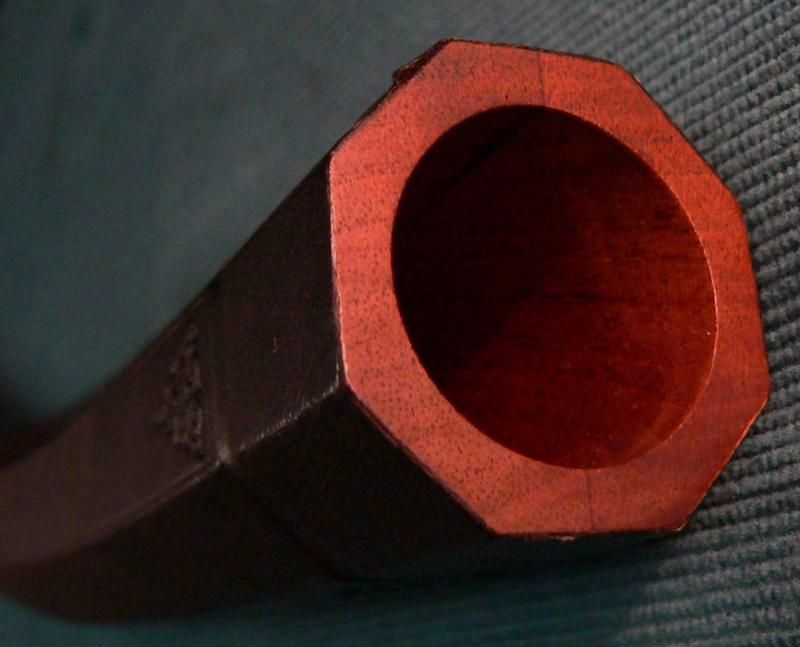 The two smaller instruments on the left are cornetts, pictured here with other members of the cornett family.
The two smaller instruments on the left are cornetts, pictured here with other members of the cornett family. The cornett, also know by its Italian name the
cornetto and its German name the
Zink, is among the oldest wind instruments known to Europe. As a lip-vibrated instrument its method of producing sound bears comparison to the trumpet, and indeed the sound it produces is distinctly trumpet-like, though less metallic and brash. It is related to the more infamous instrument the Serpent which is the bass instrument of the cornett family. During the classical period the cornett fell into disuse, possibly due to its perceived 'rudeness' as well as the challenge of playing it well.
It has been called the "poor white trash" of musical instruments, since it was simple to make and the peasants were fond of it. You may visit this recording of Palestrina and judge for yourself whether or not the cornett deserved such abuse:
Given its curved shape, in manufacture it could not be hollowed out with a straight auger as was done with flutes. Instead the makers would cut a block of appropriate size in half, carve out a trench on each side, then glue the halves back together and carve the exterior. Here you can see the octagonal cross-section, the leather wrapping, and even the glue lines of a typical cornett:
